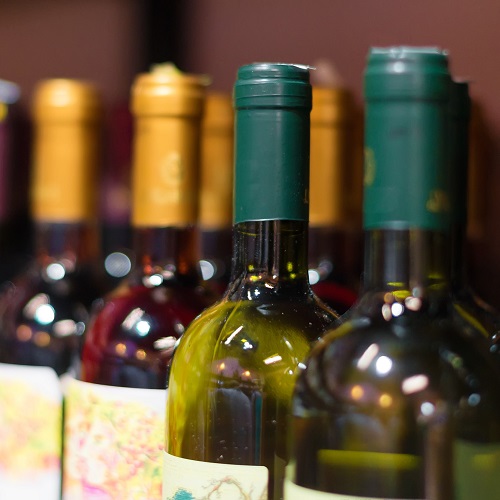08 January 2024
 Would you be happy to pour your friends a glass of wine from a cask or sip your favourite red from an aluminium can?
Would you be happy to pour your friends a glass of wine from a cask or sip your favourite red from an aluminium can?
Traditional glass bottles have long been the preferred choice of packaging among wine lovers due to the belief that wine looks and tastes better in glass. While glass bottles have been the wine industry’s go-to for centuries, they are not the most carbon-friendly option available.
Researchers from the University of South Australia’s Ehrenberg-Bass Institute for Marketing Science and the University of Adelaide’s Business School have explored people’s wine packaging choices, and how attributes such as price, brand, and messaging can influence them.
Lead researcher Jakob Mesidis says previous wine packaging research has largely focused on wine label and closure (cork or screw-top) preferences, but little attention has been paid to the format of the packaging.
“We knew that consumers weren’t buying alternatively packaged wine at the same rate they were buying it bottled, so we wanted to know what we should change to motivate them to choose more sustainable options,” he says.
Conventional glass wine bottles are the wine industry’s largest source of carbon emissions, with the manufacture of a single bottle generating 1.25kg of carbon dioxide. In total, the production and transport of glass wine bottles make up more than two thirds of the wine industry’s total carbon output.
Australia’s main alternative wine packaging formats are the ‘bag-in-box’ (i.e., cask wine) and aluminium cans, although new formats, such as flat plastic wine bottles, are gradually entering the market each day.
These alternative formats are up to 51% more carbon efficient than glass, but Mesidis says Australian consumers are resistant when it comes to these more environmentally friendly options.
“There are some underlying prejudices in relation to alternative wine packages as they are seen as the cheaper, low-quality option when compared to glass bottles, which come with a sense of heritage and luxury,” he says.
“Canned wine has seen a rise in popularity but is still a small portion of the market. Flat bottles have only recently been introduced to Australia but have grown in popularity overseas.”
So, what can the wine industry do to bring consumers on board?
In a survey of 1200 Australians, the Ehrenberg-Bass Institute found that cask wine and flat plastic wine bottles were the most preferred formats after traditional glass bottles. Cans were the least preferred, as they were closely tied to specific occasions, such as drinking outdoors.
Results also found that package format was the biggest influence on people’s choices. Price came second, while the importance of brand and eco-messaging varied depending on the respondent’s age and how many eco-friendly behaviours they claimed to engage in.
Alternative wine formats were also typically bought more by younger people. Consumers were found to be more likely to choose alternative wine packaging when it is priced at a mid-to-low price range and if it comes from a well-known, prestigious brand.
“If a smaller, less-known winery’s mission is to grow its brand as much as possible, relying solely on alternatively packaged wines is not the way to go. Most Australians—for the time being—are still going to reach for a glass bottle when they’re at the shops,” Mesidis says.
“Larger, more prestigious brands are likely to see more success with alternatively packaged wine. Ultimately, this research provides wine marketers with a foundation for their low-carbon wine packaging strategies, rather than blindly navigating this relatively new field.
“Research in this space is still young and there is exciting work to be done to better understand this burgeoning part of the wine industry.”
The research was generously funded by the Wolf Blass Foundation.
Media contact: Melissa Keogh, Communications Officer, UniSA M: +61 403 659 254
E: Melissa.Keogh@unisa.edu.au
Researcher contact: Jakob Mesidis, jmesidis@gmail.com



